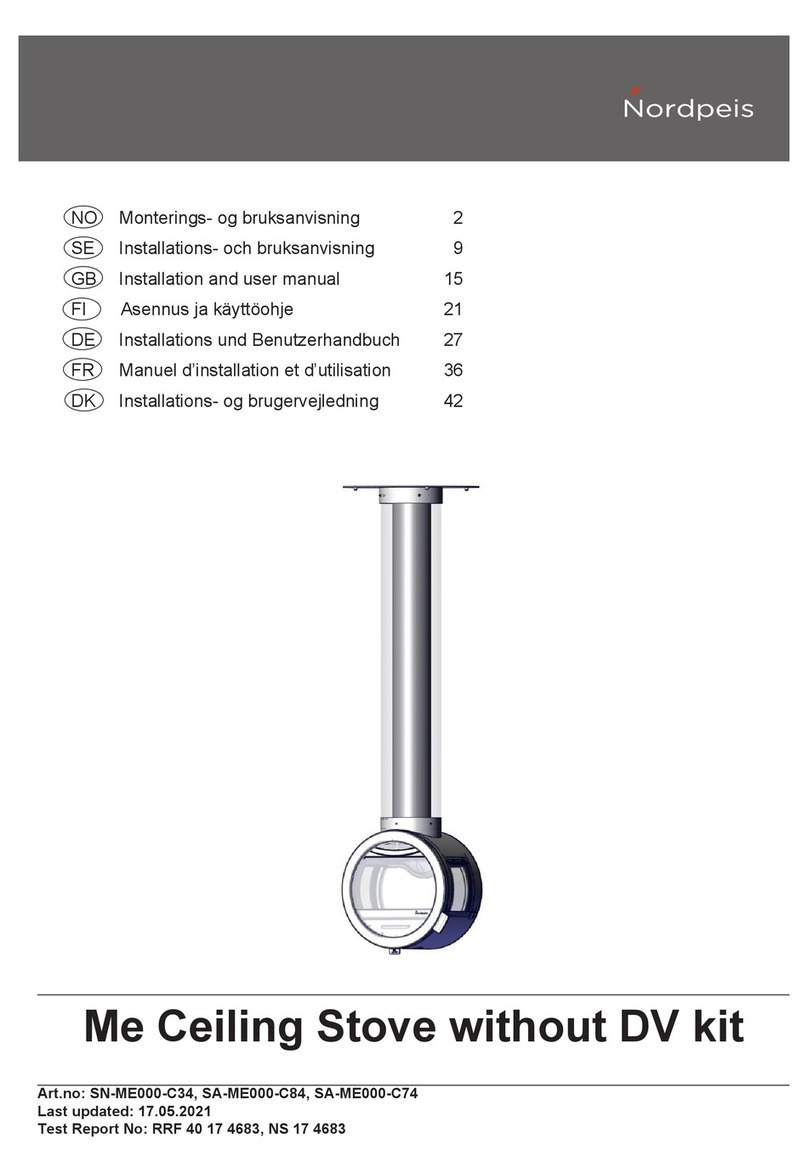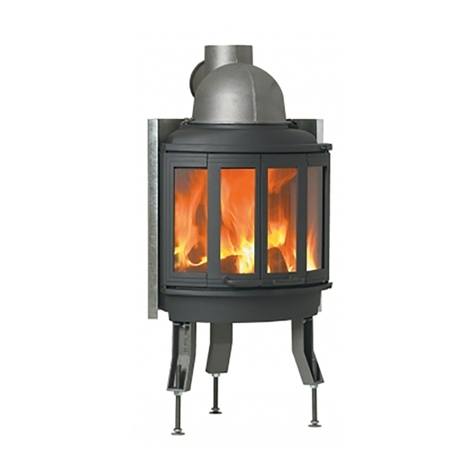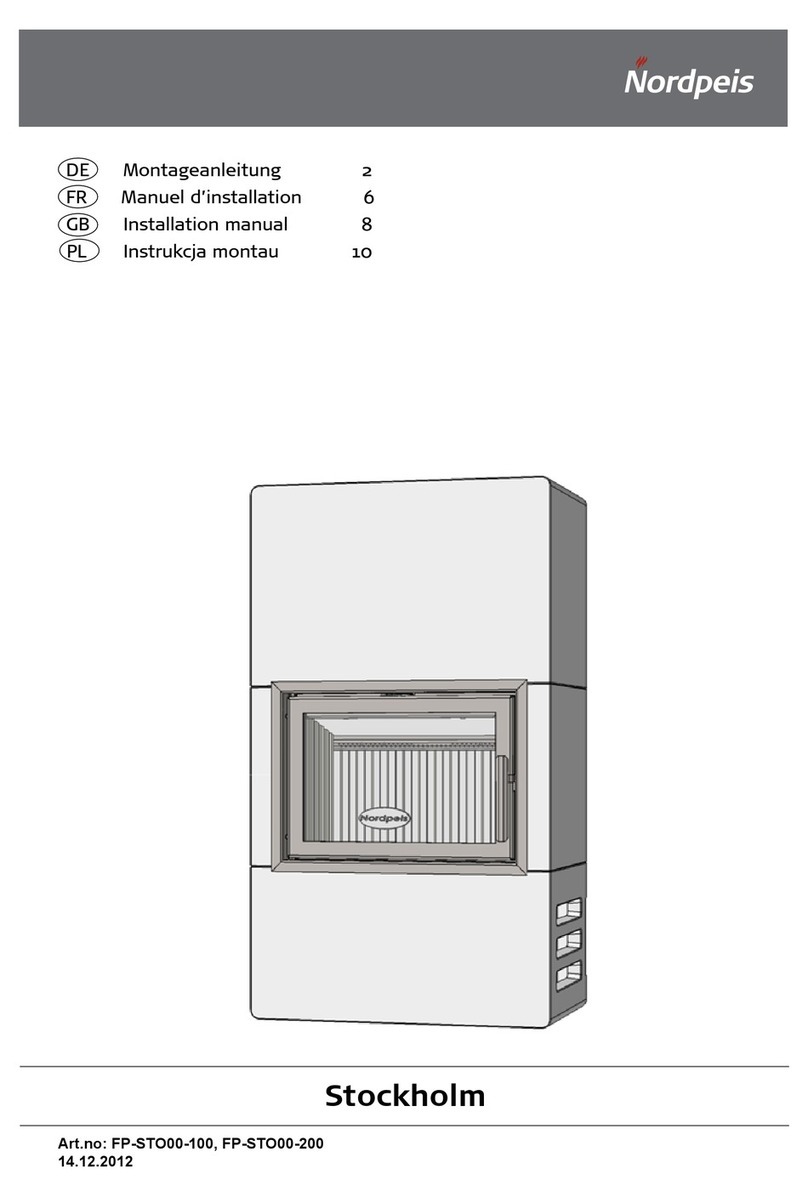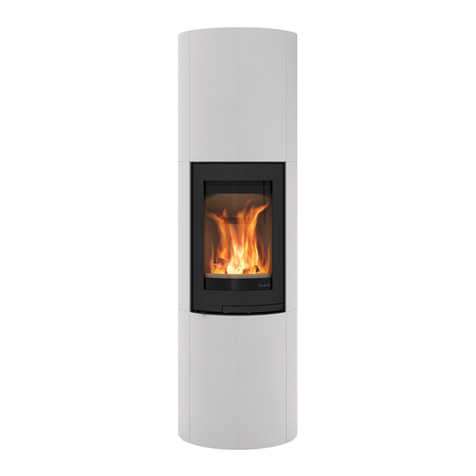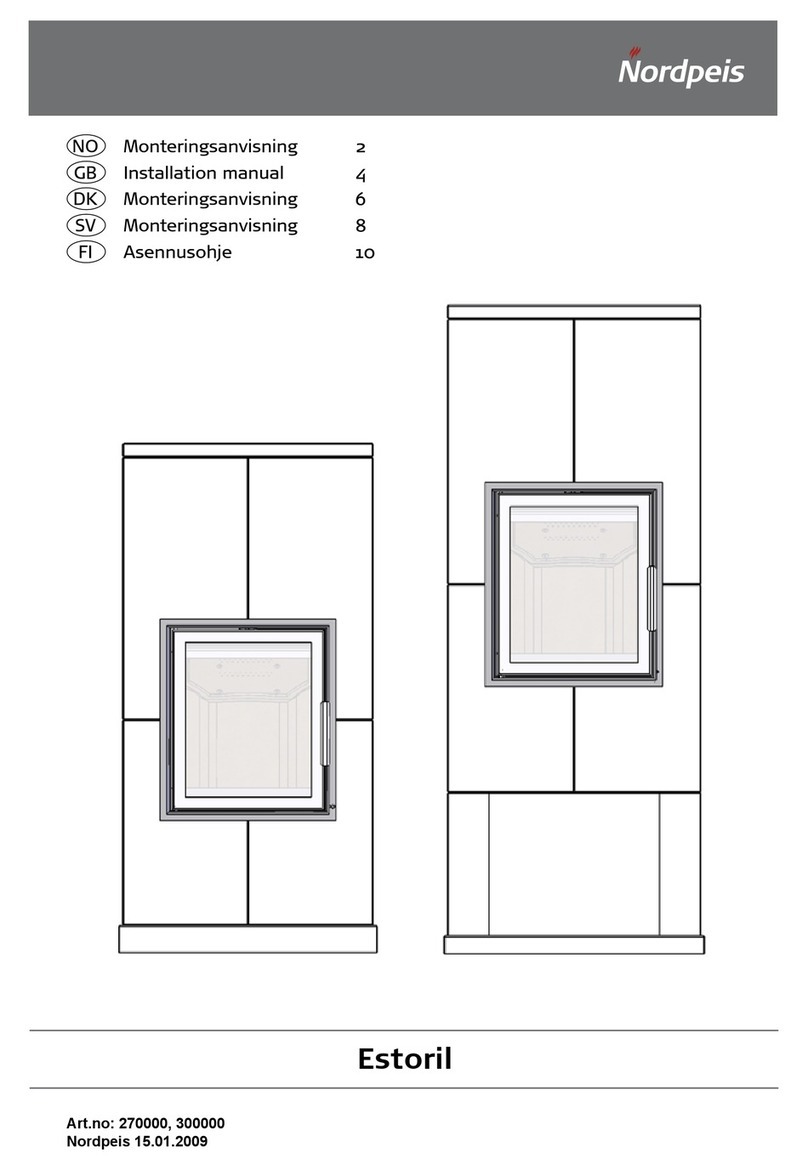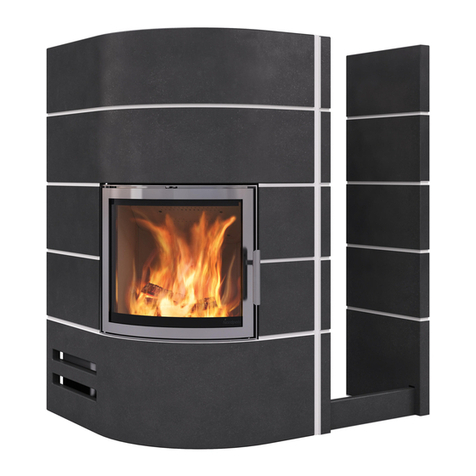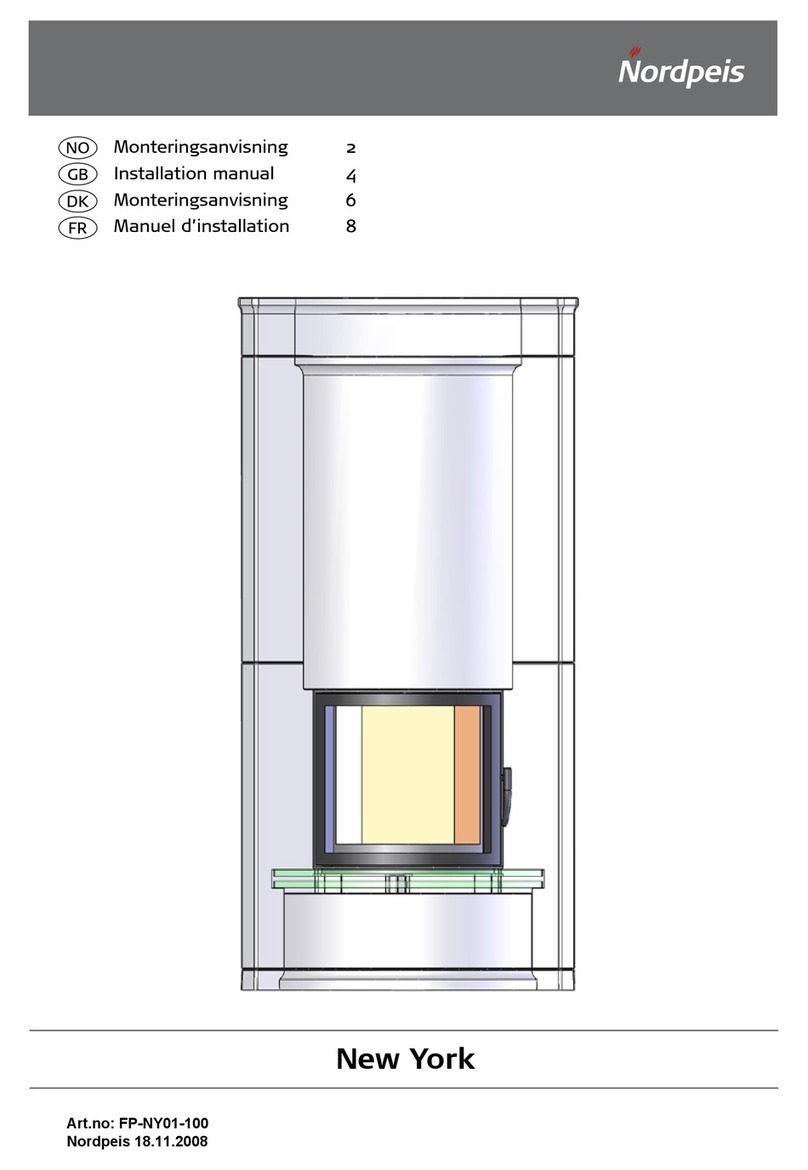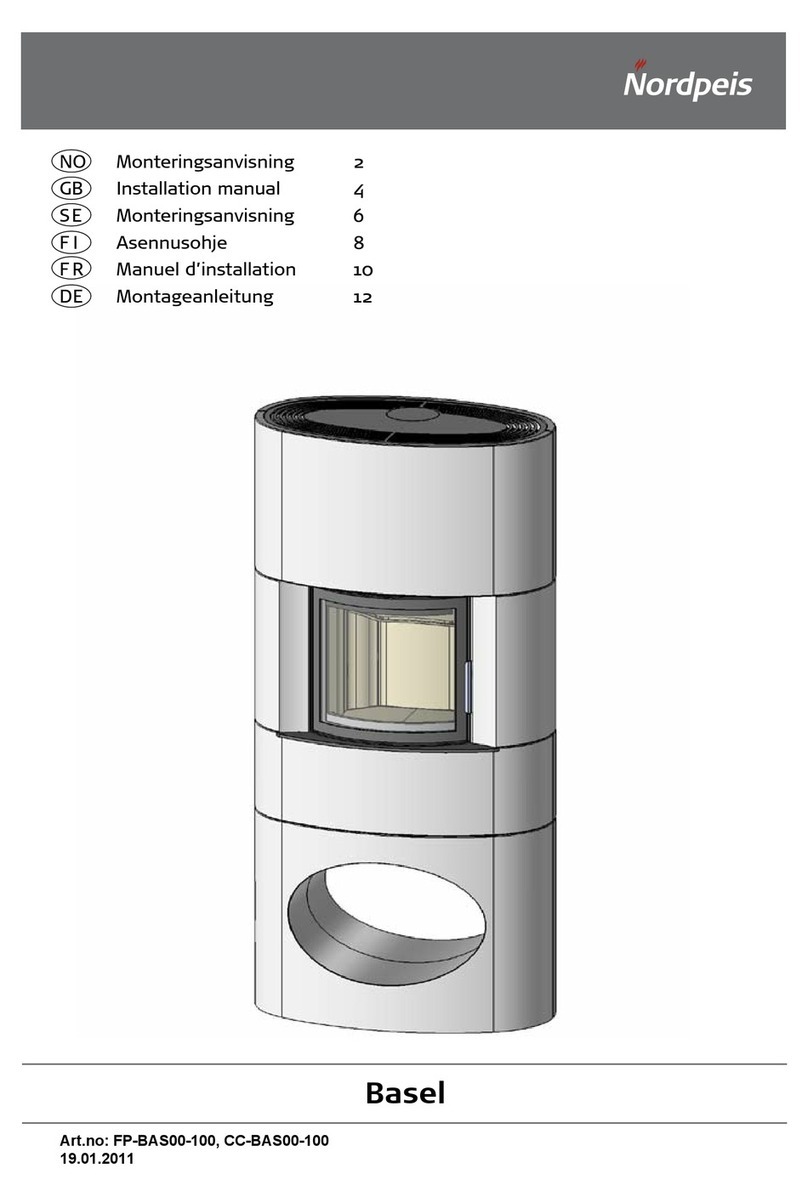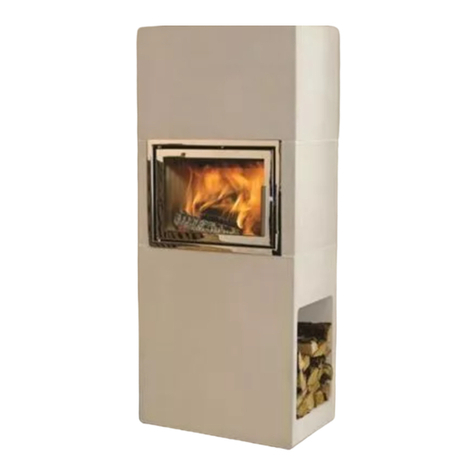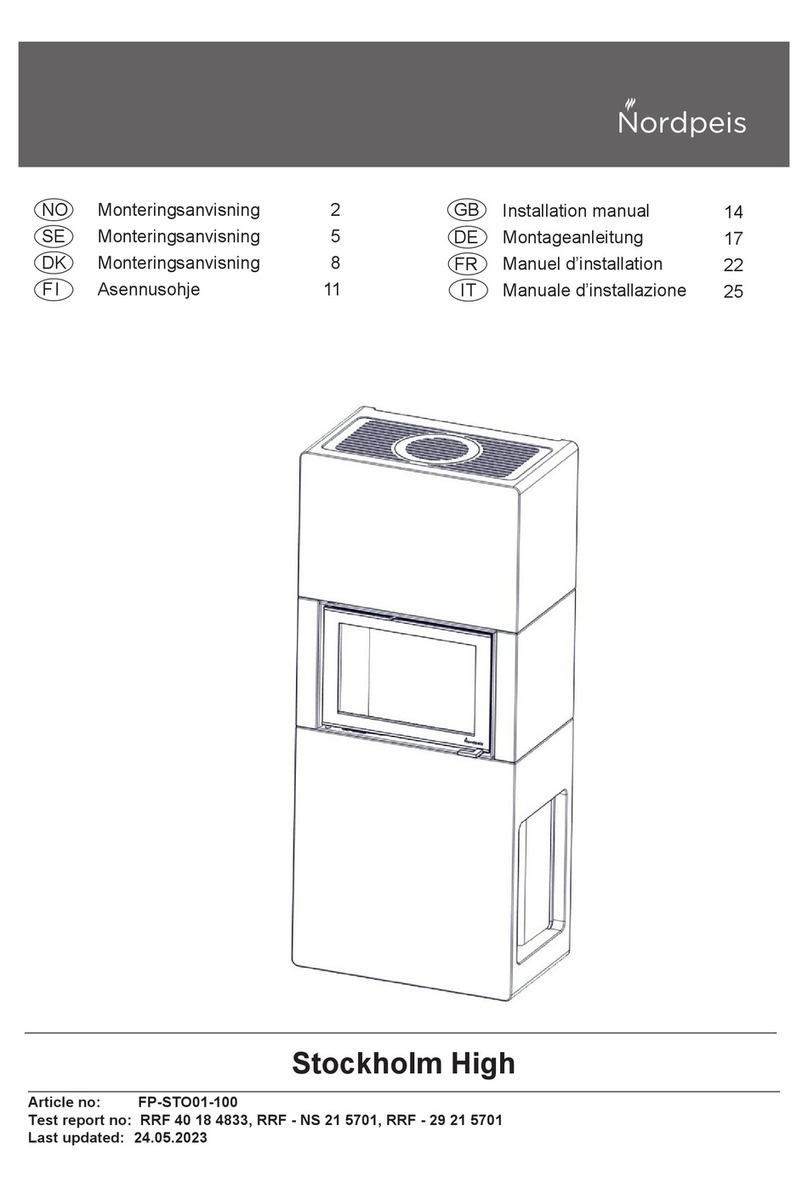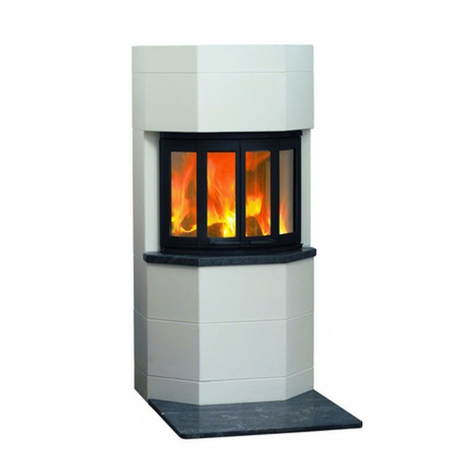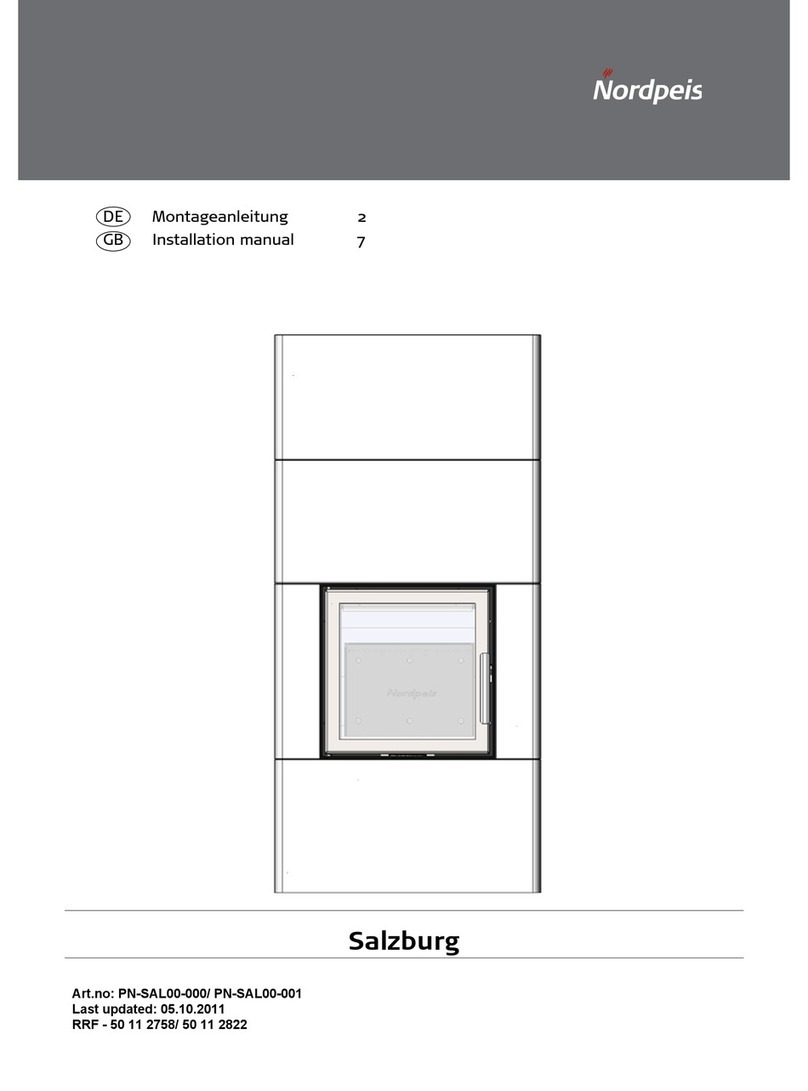11
GB
FIG 6
The amount of air to the combustion is regulated with
the air vent control.
FIG 7
The insert is delivered prepared for top connection. If
the insert is to be connected at the back, the ue outlet
collar must be placed according to FIG 8
FIG 8
Remove the cutout at the back of the radiation shield
(A). Remove the ue outlet cover and smoke outlet
collar (B). Mount the ue outlet collar on the back outlet
and t the ue outlet cover over the top outlet (C). The
insert can now be connected at the back.
Connection of the ue
Please be aware when connecting the 150 mm ue to
the smoke dome that the ue is placed outside the ue
outlet collar. *Alternative versions exsists due to
National requirements.
For the ue connection to the chimney, follow the
recommendations from the chimney manufacturer.
Operational control
When the insert is in an upright position, and prior to
mounting the surround, control that all functions are
easy to manoeuvre and appear satisfactory.
Air vent control
(Up in the centre FIG 6)
Left Completely open
Right Closed
Painting the Surround
It is recommended to use the insert a few times in
order to let the varnish harden before any masking and
painting. Only use water based breathing paint and a
designated masking tape. Carefully remove the tape in
order not to damage the varnish.
5. Lighting the re for the rst time
When the insert is assembled and all instructions have
been observed, a re can be lit. Be careful with
touching the insert the rst few times it is used as it may
damage the varnish. This is only true when the insert is
new and the varnish has not yet heat cured.
Avoid strong hits when inserting logs into the burn
chamber, in order not to damage the Thermotte plates.
Be aware that humidity in the insulation plates can
cause slow combustion at initial ring, which will be
resolved as the humidity evaporates. Possibly leave the
door slightly open the rst 2-3 times that the insert is
used.
It is advisable to air well when lighting a re for the
rst time as the varnish on the insert will release
some smoke or smell. This smoke and smell will
disappear and are not hazardous. When lighting the re
for the rst time we also recommend opening/shutting
the door regularly the rst two hours to aviod the door
gasket sticking to the varnish
Lighting a re
Open the vent control (FIG 6). Insert small dry pieces
of wood, ignite and ensure that the ames have a good
grip of the wood. Close the door when the ames are
stable and the chimney is warm. If it is not closed the
insert and chimney may overheat. The air supply is then
regulated with the vent control.
When there is a glowing layer of coal, new wood logs
can be inserted. Remember to pull the hot ember for-
ward in the insert when inserting new logs so that the
wood is ignited from the front. The vent control should
be opened each time new logs are inserted so that the
ames get a good grip. The re should burn with bright
and lively ames.
Using the insert with low combustion effect increases
the pollution as well as the risk of a re in the chimney.
Never allow the insert or ue to become glowing red.
Turn off the vent control should this happen. Regulation
of the vent control takes some experience, but after a
little while you will nd a natural rhythm for the re.
IMPORTANT! Always remember to open the air
vent control (preferably also the door) before
new wood logs are inserted into a hot burn
chamber. Let the ames get a good grip on the
wood before the air control setting is reduced.
When the draught in the chimney is low and
the vent is closed, the gas from the rewood
can be ignited with a bang. This can cause
damages to the product as well as the immediate
environment.
6. Maintenance
Cleaning and inspection
The insert should be inspected thoroughly and cleaned
at least once per season (possibly in combination
with the sweeping of the chimney and chimney pipes).
Ensure that all joints are tight and that the gaskets are
rightly positioned. Exchange any gaskets that are worn
or deformed.
Remember that the insert must always be cold when
inspected.
Ashes
The ashes should be removed with regular intervals.
Be aware that the ashes can contain hot ember even
several days after the re is nished. Use a container of
non-combustible material to remove the ashes. It is
recommended to leave a layer of ashes in the bottom
as this further insulates the burn chamber. Take care
